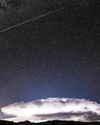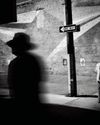Understanding Depth Of Field
Shutterbug
|November 2016
Making sense of the “circle of confusion".

DEPENDING ON YOUR PHOTOGRAPHIC INTERESTS, depth of field—the range of distances over which your lens will be sharp—can affect you in either propitious or problematic ways. If you’re trying to isolate one face in a group, a shallow depth of field is just what you need. If you’re hoping to capture the drama of a racehorse beating down the track in your direction, then shallow depth of field can turn much of the equine into a befuddling brown blur, no matter how high your shutter speed.
Frankly, you don’t need to know the science that governs depth of field. You can rely on your preview button or those nifty white marks on your lens barrel. But then again, Napoleon ignored the logistics of marching into Russia, and the results were disappointing. It generally helps to understand what’s going on.
Depth of field is really based on a practical compromise. A perfect lens will bring everything at a given distance into sharp focus at the plane of your camera’s sensor. All subject matter either closer or farther will be unsharp. All of it.
このストーリーは、Shutterbug の November 2016 版からのものです。
Magzter GOLD を購読すると、厳選された何千ものプレミアム記事や、10,000 以上の雑誌や新聞にアクセスできます。
すでに購読者ですか? サインイン
Shutterbug からのその他のストーリー

Shutterbug
“The Pano Rocks!”
THIS ONE SURE DOES, AND FOR MORE REASONS THAN YOU MIGHT EXPECT
4 mins
May 2018

Shutterbug
Landscapes In Motion
HOW MICHAEL SHAINBLUM CAPTURES HIS TRULY BREATHTAKING IMAGERY
5 mins
May 2018

Shutterbug
Shooting Stars
PREPARED FOR A METEOR SHOWER, A PHOTOGRAPHER FINDS THE NIGHT HAS A FEW SURPRISES IN STORE.
2 mins
January 2018

Shutterbug
Shake It Up
EXPLORE CREATIVE TECHNIQUES TO ADD VARIETY TO YOUR PHOTOS.
2 mins
January 2018

Shutterbug
Life Lessons
HOW INSTAGRAM AND AN IPHONE TURNED A HOBBY INTO A SECOND CAREER
3 mins
January 2018

Shutterbug
Shutter To Think
EVERYTHING YOU ALWAYS WANTED TO KNOW ABOUT CAMERA SHUTTERS BUT WERE AFRAID TO ASK
3 mins
January 2018

Shutterbug
Monochrome Master
THE BLACK-AND-WHITE MAGIC OF MAX VADUKUL
7 mins
October 2017

Shutterbug
True Grit
CAPTURING AMERICAN TRADITIONS IN TIMELESS BLACK-AND-WHITE IMAGES.
5 mins
October 2017

Shutterbug
Treasure Chest
WHAT’S THE REAL ATTRACTION—THE PHONE’S CAMERA OR THE CREATIVITY OF ITS APPS?
3 mins
October 2017

Shutterbug
Invisible Man
HOW DAVID INGRAHAM TAKES STREET PHOTOGRAPHY BEYOND TRADITION.
2 mins
October 2017
Translate
Change font size

